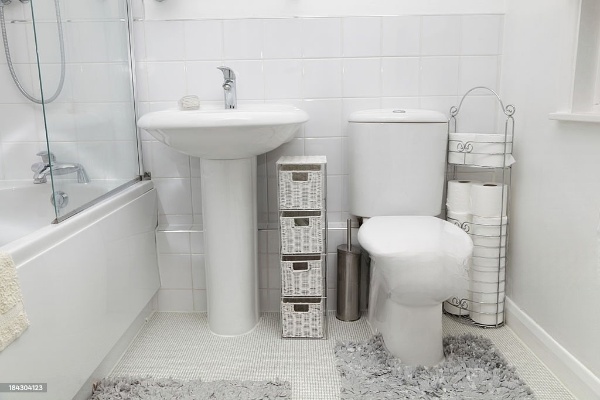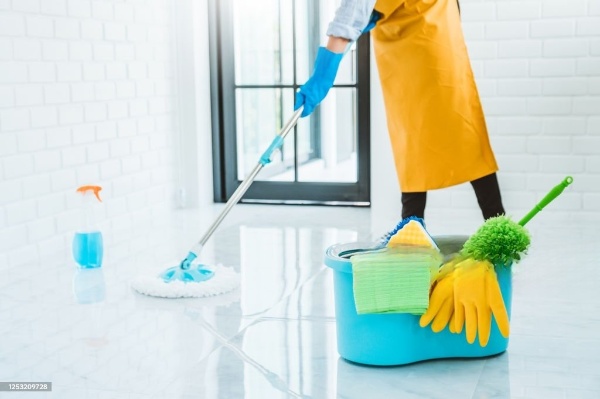In today’s world, where maintaining a clean and sanitized home has become more important than ever, understanding how to effectively clean high-touch areas is crucial. These surfaces, often overlooked during routine cleaning, are potential hotspots for germs and bacteria, making them a significant concern for the health and safety of your household. Proper sanitization of these areas not only ensures a cleaner environment but also reduces the risk of spreading infections. This guide provides an in-depth look at how to identify and sanitize these critical areas in your home.
Understanding High-Touch Areas: What Are They and Why Do They Matter?
High-touch areas are surfaces or objects within your home that are frequently touched by multiple people throughout the day. These include doorknobs, light switches, remote controls, kitchen counters, and more. Because these areas are repeatedly handled, they can become breeding grounds for harmful germs, bacteria, and viruses. Every touch increases the risk of contamination, making these surfaces particularly vulnerable to harboring pathogens.
The importance of regularly sanitizing high-touch areas cannot be overstated. In today’s health-conscious world, where the spread of infections is a significant concern, understanding the role these areas play in transmitting germs is essential. Neglecting to sanitize these surfaces regularly can lead to an increased risk of illness within your household. By taking the time to properly clean and sanitize high-touch areas, you contribute to a healthier home environment, minimizing the chances of illness spreading among family members.
Photo by iStock
The Importance of Regularly Sanitizing High-Touch Areas
Sanitizing high-touch areas is more than just a routine cleaning task—it’s a crucial step in protecting your family’s health. Germs and viruses can linger on surfaces for extended periods, sometimes lasting hours or even days. This lingering presence creates a high potential for these pathogens to transfer from one person to another, leading to the spread of illnesses like the common cold, flu, and other infections.
For households with vulnerable individuals, such as children, elderly family members, or those with compromised immune systems, the importance of thorough sanitization is even greater. These groups are more susceptible to infections, making it essential to reduce their exposure to harmful germs. Regularly sanitizing high-touch areas creates an additional layer of protection, helping to safeguard the health of everyone in the home.
How to Identify High-Touch Areas in Your Home
Before you can effectively sanitize, it’s important to identify the high-touch areas in your home. While some surfaces are obvious, others might not be as apparent. Understanding where these hotspots are located allows you to focus your cleaning efforts more effectively. Common high-touch areas include:
- Doorknobs and Handles: These are touched every time someone enters or exits a room, making them a prime spot for germ accumulation.
- Light Switches: Used throughout the day, especially in high-traffic areas, light switches are often overlooked during regular cleaning.
- Remote Controls: Frequently handled by multiple people, remote controls are a common source of germs but are often neglected during cleaning routines.
- Kitchen Counters and Cabinet Handles: These are essential areas in food preparation and are often touched with hands that may not be clean, making hygiene crucial.
- Faucet Handles: Touched every time someone washes their hands, faucet handles can easily harbor germs if not cleaned regularly.
- Appliance Handles: Handles on refrigerators, microwaves, and ovens are often touched by multiple people, making them another high-touch area that requires attention.
Photo by iStock
- Electronic Devices: Phones, tablets, and laptops are constantly in use and can easily become breeding grounds for germs.
By identifying these areas, you can prioritize them during your cleaning routine, ensuring that they are thoroughly sanitized to reduce the risk of germ transmission.
Step-by-Step Guide to Sanitizing High-Touch Areas
Once you’ve identified the high-touch areas in your home, it’s time to sanitize them properly. Effective sanitization requires more than just a quick wipe-down; it involves specific steps to ensure that surfaces are thoroughly disinfected. Follow this detailed step-by-step guide for optimal results:
- Gather the Right Cleaning Supplies
- To sanitize effectively, you need the right tools and products. Start by gathering disinfectant spray or wipes that are EPA-approved, ensuring they are effective against germs and viruses. Microfiber cloths are ideal for cleaning, as they trap dust and dirt more effectively than regular cloths. Wear disposable gloves to protect your hands from harsh chemicals and to prevent the spread of germs. If you’re cleaning larger surfaces like floors or countertops, have a bucket and mop ready.
Photo by iStock
- Pre-Clean the Surfaces
- Before applying any disinfectant, it’s important to clean the surfaces first. Use a general-purpose cleaner to remove visible dirt, dust, and debris. This step is crucial because disinfectants work best on clean surfaces, where they can directly contact and kill germs without interference from dirt or grime.
- Apply the Disinfectant Properly
- Spray or wipe the disinfectant onto the surface, ensuring complete coverage. Follow the manufacturer’s instructions on how long the disinfectant needs to sit on the surface to be effective—this is known as the “dwell time.” Allowing the disinfectant to sit for the recommended time, usually between 3 to 10 minutes, ensures that it effectively kills the germs and viruses present on the surface.
- Wipe Down the Surface
- After the disinfectant has had enough time to work, use a clean, dry microfiber cloth to wipe the surface. This step removes any remaining product residue and ensures the surface is safe to touch. Microfiber cloths are particularly effective because they leave fewer streaks and pick up more debris than other cloths.
- Don’t Forget Hard-to-Reach Areas
- High-touch areas often include small or hard-to-reach spots, like the back of doorknobs or the sides of light switches. These areas can easily be missed during routine cleaning but are just as likely to harbor germs. Take extra care to clean these spots thoroughly, ensuring that all surfaces are sanitized.
How Often Should You Sanitize High-Touch Areas?
The frequency of sanitizing high-touch areas depends on the level of traffic and use within your home. As a general guideline:
- Daily: For areas with high traffic, such as kitchen counters, doorknobs, and light switches, daily sanitization is recommended. These areas are touched frequently and are more likely to harbor germs, making daily cleaning necessary.
- Weekly: Surfaces like remote controls, appliance handles, and less frequently touched items can be sanitized weekly. These areas still accumulate germs but not at the same rate as high-traffic areas.
- During Illness: If someone in the household is sick, increase the frequency of sanitizing all high-touch areas to prevent the spread of germs. During illness, germs are more likely to be present on surfaces, making frequent cleaning essential to protect other household members.
Choosing the Right Disinfectant: What to Look For
Not all disinfectants are created equal, and choosing the right product is essential for effective sanitization. When selecting a disinfectant, consider the following factors:
- EPA Approval: Ensure that the disinfectant is EPA-approved and proven to be effective against a wide range of viruses and bacteria. This certification guarantees that the product meets stringent safety and efficacy standards.
- Contact Time: Check the label for the recommended contact time, which is the duration the disinfectant needs to remain on the surface to kill germs effectively. Following this guideline is crucial for ensuring the product’s effectiveness.
- Safety: Consider the safety of the disinfectant, especially if you have children or pets in the home. Some products contain harsh chemicals that can be harmful if not used correctly, so it’s important to choose a product that is both effective and safe for your household.
- Ease of Use: Disinfectant wipes are convenient for quick clean-ups and smaller surfaces, while sprays are better suited for larger surfaces. Choose the format that best fits your cleaning routine and needs.
Natural Alternatives to Chemical Disinfectants
For those who prefer to use natural cleaning solutions, there are several options available. While these alternatives may not be as potent as chemical disinfectants, they can still reduce germs on surfaces:
- Vinegar and Water: A 1:1 mixture of vinegar and water can be used to clean and deodorize surfaces. However, it is important to note that vinegar is not a disinfectant and should be followed up with an EPA-approved disinfecting agent for thorough sanitization.
- Hydrogen Peroxide: This is a natural disinfectant that can be used on hard surfaces. It’s effective against a variety of pathogens when left on the surface for at least one minute before wiping it off.
- Essential Oils: Some essential oils, like tea tree oil and eucalyptus, have antimicrobial properties. Adding a few drops to water can create a natural cleaning solution, although it should be noted that essential oils are not as effective as chemical disinfectants.
Additional Tips for Keeping Your Home Germ-Free
Beyond regularly sanitizing high-touch areas, there are additional steps you can take to maintain a clean and germ-free home:
- Hand Hygiene: Encourage everyone in your household to wash their hands frequently, especially after touching high-touch areas. Proper handwashing is one of the most effective ways to prevent the spread of germs.
- Laundry Routine: Wash household linens, such as towels and bedding, regularly in hot water to kill germs. Regular laundering of these items helps to reduce the overall germ load in your home.
- Ventilation: Keep your home well-ventilated by opening windows or using exhaust fans. Good ventilation helps to reduce the concentration of airborne germs and improves indoor air quality.
Conclusion
Sanitizing high-touch areas is a simple yet effective way to protect your household from germs and viruses. By following the tips and guidelines provided in this guide, you can ensure that your home remains a safe and healthy environment for everyone. Regular cleaning and proper sanitization not only contribute to a cleaner home but also provide peace of mind, knowing that you are taking proactive steps to protect your loved ones.
FAQs
- How often should high-touch areas be sanitized?
- High-touch areas should be sanitized daily in high-traffic areas and weekly in less frequently used spaces. During illness, increase sanitization to prevent the spread of germs.
- What are some common high-touch areas in a home?
- Common high-touch areas include doorknobs, light switches, remote controls, kitchen counters, faucet handles, and electronic devices like phones and laptops.
- Can natural disinfectants be as effective as chemical ones?
- While natural disinfectants like vinegar and hydrogen peroxide can reduce germs, they may not be as effective as chemical disinfectants. It’s important to follow up with an EPA-approved disinfectant for thorough sanitization.
- What is the difference between cleaning and sanitizing?
- Cleaning removes dirt and debris from surfaces, while sanitizing involves using a disinfectant to kill germs and viruses on those surfaces.
- Is it necessary to wear gloves when sanitizing high-touch areas?
- Wearing gloves is recommended when sanitizing to protect your hands from harsh chemicals and prevent the spread of germs.




